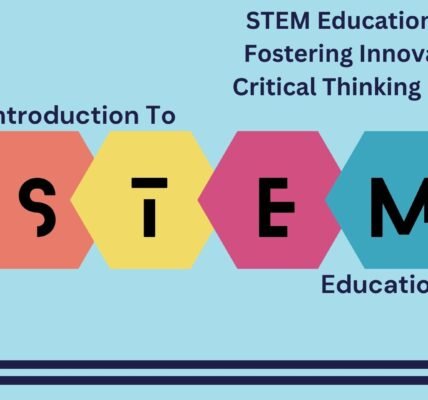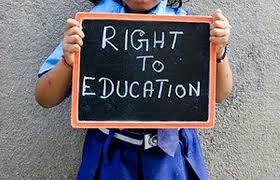In recent years, educational podcasts and videos have become powerful tools for learning. These formats provide accessible and engaging ways to absorb information. Students and educators alike are embracing them as valuable resources. Educational podcasts and videos offer flexibility, cater to different learning styles, and enhance student engagement. In this blog, we’ll explore their impact on learning and why they are becoming essential in today’s education landscape.
Why Educational Podcasts and Videos Are Popular
Podcasts and videos have gained popularity due to their convenience and accessibility. With the rise of digital platforms, students can access educational content anytime, anywhere. This makes learning more flexible and personalized. Whether on a commute or at home, learners can listen to podcasts or watch videos that enhance their understanding of a subject.
Furthermore, podcasts and videos are often free or affordable. This makes them accessible to a broad audience, including students who may not have access to traditional learning resources.
Why do students prefer these formats?
Podcasts and videos make learning more interactive. Instead of reading a textbook, students can listen to experts or watch visual explanations. This keeps learning engaging and helps students retain information more effectively.
1. Enhancing Engagement and Retention
One of the most significant impacts of educational podcasts and videos is their ability to engage students. Traditional learning methods, like reading long texts, can sometimes feel tedious. Podcasts and videos, on the other hand, present information in an engaging and entertaining way.
For example, in a science video, a complex concept can be explained using visuals, animations, and real-life examples. This not only makes the content easier to understand but also keeps the viewer’s attention. Similarly, podcasts can include storytelling elements, interviews, and discussions that make the content relatable.
How do podcasts and videos improve retention?
When students engage with content, they are more likely to remember it. Educational podcasts and videos cater to auditory and visual learners, which helps improve retention. By providing information in an engaging format, students absorb and retain knowledge more effectively.
2. Catering to Different Learning Styles
Every student has a unique learning style. Some are visual learners, while others prefer auditory or hands-on approaches. Educational podcasts and videos cater to these diverse learning styles. They provide content in various formats, ensuring that all learners can find a method that suits them.
For example, a video might include visual elements like graphs, images, and demonstrations. This helps visual learners understand concepts better. On the other hand, a podcast allows auditory learners to focus on listening and absorbing information.
Why is it important to cater to different learning styles?
When educational content is tailored to individual learning preferences, students are more likely to stay engaged. They also find it easier to grasp complex concepts. Educational podcasts and videos provide an inclusive approach to learning by offering different formats that suit diverse learners.
3. Encouraging Self-Paced Learning
Educational podcasts and videos allow students to learn at their own pace. In a traditional classroom, students may struggle to keep up with the teacher’s pace or may not fully understand a topic before moving on. With podcasts and videos, they can pause, rewind, or rewatch content as needed.
For instance, if a student doesn’t understand a math concept during class, they can find a podcast or video that explains it in detail. They can revisit the material as many times as needed to fully grasp the concept.
How does self-paced learning benefit students?
Self-paced learning gives students control over their education. They can take the time they need to understand complex topics without feeling rushed. Educational podcasts and videos provide the flexibility for students to review content and reinforce their knowledge at their own pace.
4. Expanding Access to Expert Knowledge
Podcasts and videos often feature experts in various fields. This gives students access to insights and knowledge from professionals they may not otherwise encounter in their regular classes. By listening to podcasts or watching videos, students can learn from industry leaders, researchers, and educators from around the world.
For example, a history podcast might feature interviews with renowned historians. Similarly, an educational video on technology could include demonstrations from leading tech experts. These resources provide students with valuable information that goes beyond their textbooks.
Why is access to expert knowledge important?
Expert knowledge broadens students’ perspectives and deepens their understanding of a subject. Educational podcasts and videos bring this expertise to students in an accessible format, allowing them to gain insights from professionals outside of their classroom environment.
5. Supporting Lifelong Learning
Educational podcasts and videos are not just for students. They support lifelong learning for individuals of all ages. Many professionals use podcasts and videos to stay updated in their fields or learn new skills. This form of learning is flexible and accessible, making it ideal for people who want to continue learning throughout their lives.
For example, a teacher might listen to an education podcast to learn about new teaching strategies. A professional in marketing could watch a video on the latest trends in digital advertising. Educational podcasts and videos cater to anyone who has a desire to learn, regardless of their stage in life.
How do podcasts and videos promote lifelong learning?
By providing flexible and accessible learning options, podcasts and videos make it easier for individuals to continue their education at any age. Lifelong learning is crucial for staying relevant in an ever-changing world, and these formats offer an easy way to keep learning.
6. Integrating Podcasts and Videos in the Classroom
Educators are increasingly incorporating podcasts and videos into their teaching. These resources can supplement traditional lessons, providing students with additional material to enhance their understanding. Teachers can assign videos or podcasts for homework or use them as part of in-class instruction.
For instance, a teacher might use a documentary video to illustrate a historical event. Or, they could recommend a podcast that discusses a novel being read in class. These resources add depth to lessons and engage students in new ways.
Why are podcasts and videos effective teaching tools?
Podcasts and videos provide dynamic, interactive ways to learn. They make lessons more engaging and help students understand complex topics. By incorporating these tools, educators can create a richer, more engaging learning experience.
Conclusion
Educational podcasts and videos have had a significant impact on learning. They offer flexibility, cater to different learning styles, and provide access to expert knowledge. These formats engage students, improve retention, and encourage self-paced learning. They are also valuable resources for lifelong learners. As education continues to evolve, podcasts and videos will play an increasingly important role in the learning process.





